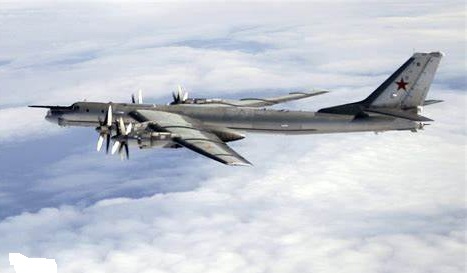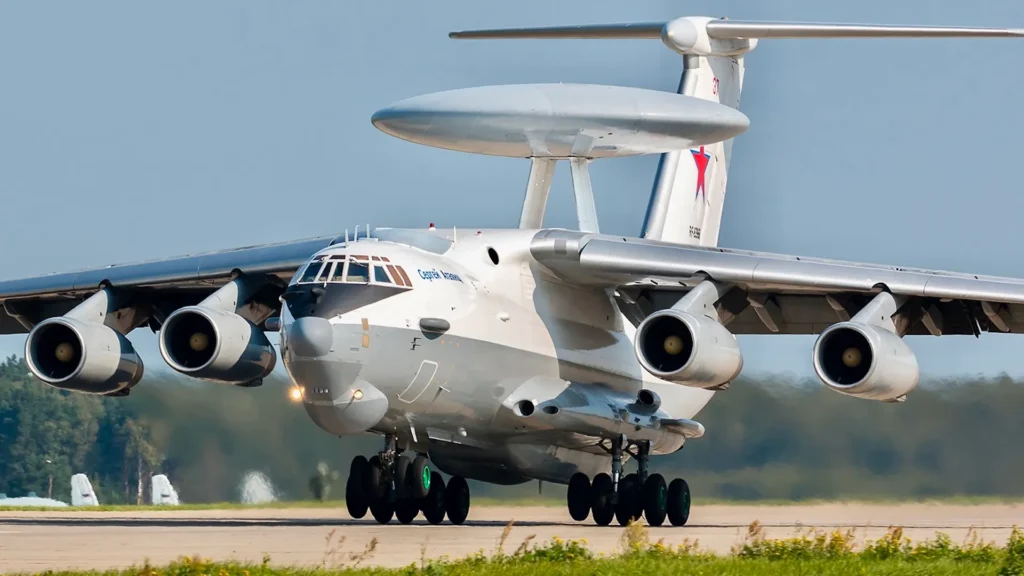Russia was on the receiving end of a drone strike which according to reports Ukraine has destroyed over forty of Russians bomber fleet. Among those destroyed as reported were Tu-95, Tu-M3 and A-50 aircraft.




Zelensky’s top aide posts spider web emoji in apparent reference to attackpublished at 10:4910:49
On social media a little earlier, Zelensky’s chief of staff, Andriy Yermak, made an apparent comment about his country’s massive drone operation.
Yermak posted an emoji of a spider web on both his Telegram channel and on X – an apparent reference to the attack’s name of “Operation Spider’s Web”.
Russia’s major military assets shown to be vulnerablepublished at 10:2910:29
Chris Partridge
BBC News weapons analyst

These attacks will have dealt a significant blow to Russia’s aerial cruise missile strike capability.
Tu-95 bombers, which are among the type of aircraft that have been destroyed, are said to have launched a large-scale Kh-101 missile attack on Ukraine earlier this year. They have been used extensively since the full-scale invasion of February 2022 and so are a vital target for the Ukrainian military.
Each bomber can carry eight guided cruise missiles and each missile itself carries a 400kg (882lb) warhead. The weapons’ range is thousands of kilometres, which allows such strategic aircraft to deploy well inside the relative safety of Russian airspace.
But just as significant is the reported loss of an A-50, the Russian equivalent of AWACS, whose role is to detect enemy aircraft and missiles, and feed those targets to Russian fighter jets. It performs a management role for aerial assets, by giving a big picture view and direction.
As for the strikes themselves, the use of drones in at least one, so close to the targets means that traditional Russian self-defence systems such as S-300 / S-400 long range SAMs, and even their shorter-range counterparts, Pantsir SA-22s, are ineffective. It also means that there was little warning that such an attack was coming to get aircraft to the relative safety of hardened shelters.
It may be that some of the Russian aircraft were not completely destroyed, and they can be repaired, but that still takes them – at the very least – out of the fight for a long time. More worrying for Moscow, it again points to the vulnerability of major military assets well inside Russian Federation territory itself.

Zelensky oversaw attack on Russian airbases, Ukrainian security sources saypublished at 10:1410:14
 Paul Adams
Paul Adams
Diplomatic correspondent, reporting from Kyiv

Astonishing details have been leaked to the media about how this morning’s Ukrainian attack on at least four Russian airbases was organised.
According to sources at the Security Service of Ukraine (SBU), “Operation Spider’s Web” took one year-and-a-half to organise and was personally overseen by Ukraine’s President Volodymyr Zelensky.
Sources say the SBU’s first smuggled FPV drones into Russia, followed later by mobile wooden cabins.
Once on Russian territory, the drones were hidden under the roofs of these cabins, which had been placed on to trucks. At the time of the attack, the roofs were remotely opened, allowing the drones to take off and hit the nearby airbases.
Video has emerged showing drones emerging from the roof of one of the vehicles involved. Ukraine estimates the damage caused by the attacks at over $2bn (£1.5bn).
The targets hit included TU-95s (the large strategic bomber known as “Bear”), TU-22M3s (supersonic long-range bomber) and A-50 (early warning and control aircraft).
In a separate development Ukraine’s head of land forces, Maj Gen Mkyhailo Drapatyi, has tendered his resignation, following a Russian ballistic missile attack which hit a Ukrainian army training facility earlier today, in which 12 soldiers were killed.
